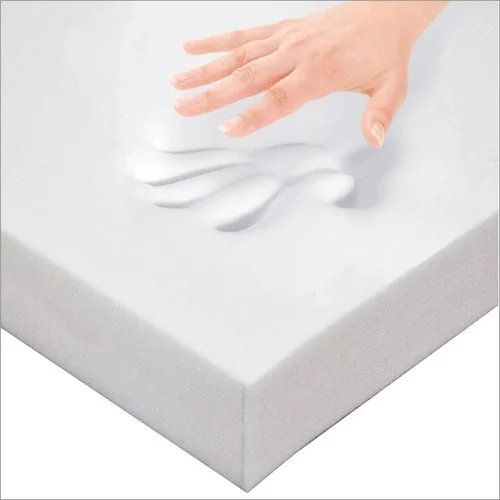10 Space Innovations Now Used in Everyday Life
Space exploration has spurred some of the most ground breaking technological advancements, many of which now find practical applications in daily life. Since 1958, NASA has developed over 2,000 technologies, the European Space Agency (ESA) has contributed more than 150 innovations, and the Indian Space Research Organisation (ISRO) has added over 300 advancements. These innovations, designed initially to support missions beyond Earth, have evolved into practical applications, enhancing various aspects of modern living. From medical breakthroughs to communication technologies, the influence of space-driven innovation is profound. Here are ten extraordinary technologies that emerged from the quest for space exploration and now enrich life on Earth.
10. Modern Food Safety Guidelines
To provide pathogen-free food for human space missions, the Pillsbury Company and US Army Laboratories worked alongside NASA in the 1960s. After implementing NASA's safety protocol system, Pillsbury trained FDA food inspectors on the Hazard Analysis and Critical Control Points (HACCP) system. This system is utilised globally for food preparation and handling.
9. Foil Blankets
Initially designed in the 1960s to protect spacecraft and astronauts on space missions, foil blankets, or space blankets, have become essential for outdoor activities, medical first aid, and disaster response. Foil blankets offer a low-cost, compact, lightweight insulation solution for protection against extreme temperatures. Made from a thin layer of plastic or polyester film with a metallic coating, these blankets are waterproof and can reflect up to 90% of a person’s body heat.
8. Anti-Icing Systems
NASA in collaboration with several companies developed specialized coatings, electrical systems and mechanical systems to prevent ice from forming on aircraft and spacecraft surfaces. This technology initially was adapted for use on commercial and private aircraft. However, this technology has seen adaptation other areas such as, cars, trains and wind turbines. Mitigating the effects of the winter months while also improving safety and efficiency.
7. Water Purification Systems
Long duration human space missions require efficient water recycling systems. In the 1960s, NASA and the Garrett Corporation, developed a small, lightweight water purifier for the Apollo program. It needed to require minimal power and not required to be monitored around-the-clock by astronauts in orbit. Water purification systems continued to be developed, allowing for longer duration missions enabling the space shuttle and International Space Station programs. This technique developed to purify and recycle water for astronauts are now used globally to provide clean drinking water in remote and disaster-stricken areas.
6. Infrared Ear Thermometers
Infrared technology, used in space to measure the temperature of stars and planets, now helps monitor human body temperature. In 1991, Diatek Corporation released a infrared thermometer Model 7000, its underlying technology was developed by NASA's Jet Propulsion Laboratory for missions including the Infrared Astronomical Satellite (IRAS). These thermometers provide a fast non-invasive way to check patient’s temperatures, revolutionizing healthcare diagnostics.
5. Scratch-Resistant Lenses
NASA licensed and developed scratch-resistant coatings to protect astronaut helmet visors from damage in space. This technology was further enhanced in the 1980s with the development of sunlight-filtering lenses, providing additional eye protection and enhancing colours. It has since been adopted in eyewear, ensuring that glasses and sunglasses can withstand everyday wear and tear.
4. Memory Foam
Initially developed in 1966 by NASA to improve aircraft seat cushioning and enhance astronaut safety, memory foam was released to the public in the 1980s. While expensive then, it has become a staple in mattresses, pillows, and footwear. Its ability to mould to pressure and return to its original shape has made it a favourite for comfort and support.
3. Camera Sensors
The compact camera sensors in today’s smartphones trace their origins to space exploration. Many of NASA’s missions required high quality imaging, from the Apollo astronauts taking the first picture of humans on the moon, to the Hubble Space Telescopes breathtaking pictures of the universe. In the 1990s, a Jet Propulsion Laboratory (JPL) team researched ways of improving Complementary Metal-Oxide Semiconductor (CMOS) image sensors. This system uses approximately 100 times less power than the in-use Charge Coupled Device’s (CCDs), allowing for smaller camera systems to be designed. This technology now powers the cameras used by billions of people daily, either in the continued space applications or in your smartphone.
2. Cordless Tools
To enable Apollo Astronauts to obtain Moon soil samples and reducing tethering in near zero-gravity environment, NASA collaborated with Black & Decker to develop cordless tools. The most notable being the drill and dust buster. Black and Decker continued the development of a range or cordless tools. This innovation is now ubiquitous in-home improvement and construction making power tools more versatile and portable.
1. Positioning Navigation and Timing
Positioning Navigation and Timing (PNT) originated during the Space Race era when scientists could track satellites through shifts in their radio signals, known as the Doppler Effect. In the 1960s, the US Navy investigated the use of satellites for locating submarines. This research eventually led to developing the Navigation System with Timing and Ranging (NAVSTAR) satellite constellation. The satellite systems have since evolved into the GPS mission, which we rely on for navigation, tracking, and fitness applications. GPS has become vital in transportation, commerce, agriculture, and emergency response. Many countries have developed PNT or complementary systems, ensuring more consistent and accurate positioning—crucial for high-tech solutions and infrastructures.
The Broader Impact
Technologies developed through space exploration have not only improved convenience to address critical global challenges. From life-saving medical devices to sustainable, energy-efficient innovations, these advancements showcase the profound benefits of investing in space. They continue to underscore how exploration drives progress and innovation, improving lives and contributing to a more sustainable future.
Conclusion
No discussion of space innovations would be complete without acknowledging a few honourable mentions: freeze-dried food, wireless headsets, and insulin pumps. As we continue to push the boundaries of possibility in space, this ongoing advancement will undoubtedly lead to even more breakthroughs that enhance life on Earth. The pursuit of space exploration not only expands our understanding of the universe but also reaffirms its immense value in driving technological progress and improving everyday life.










